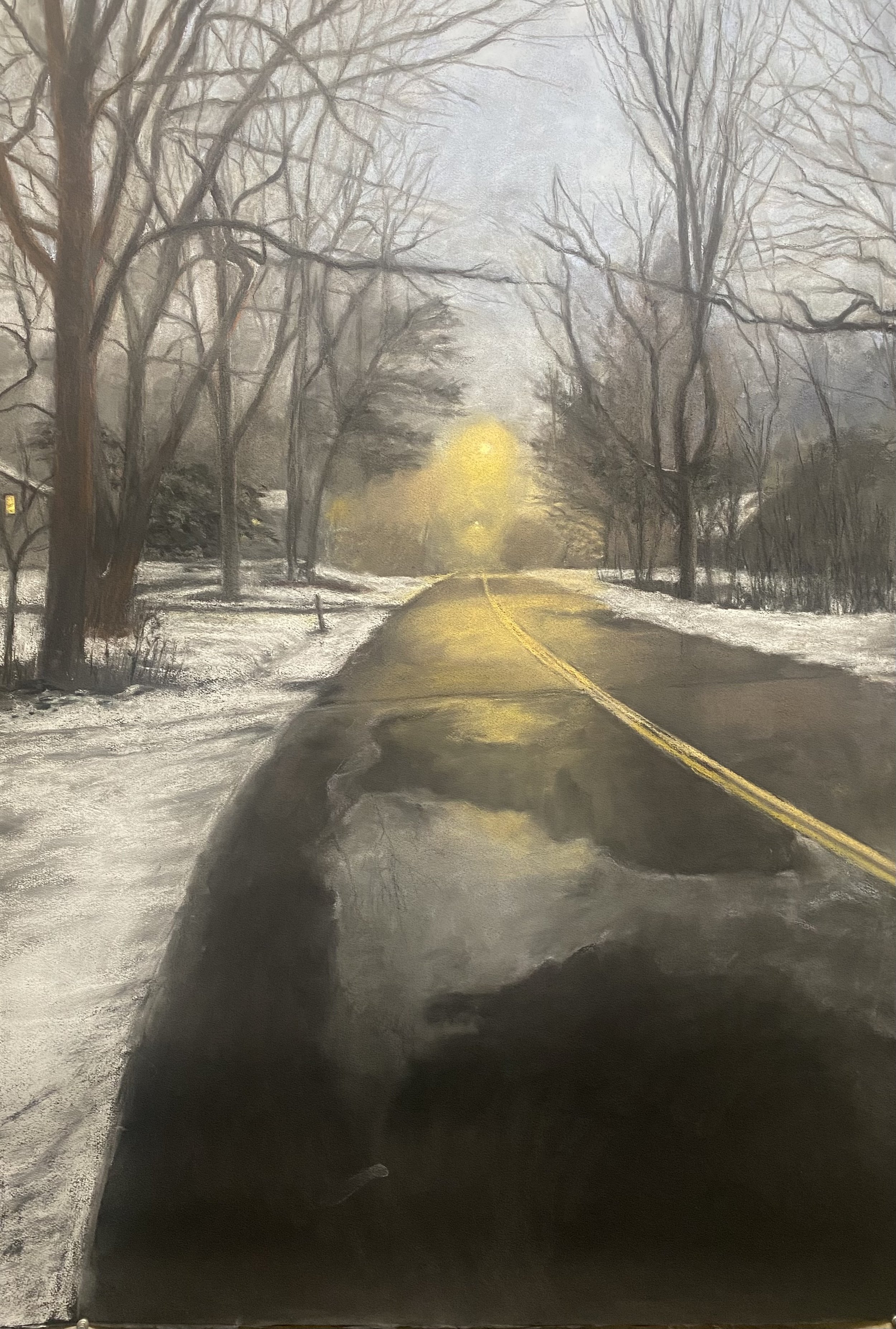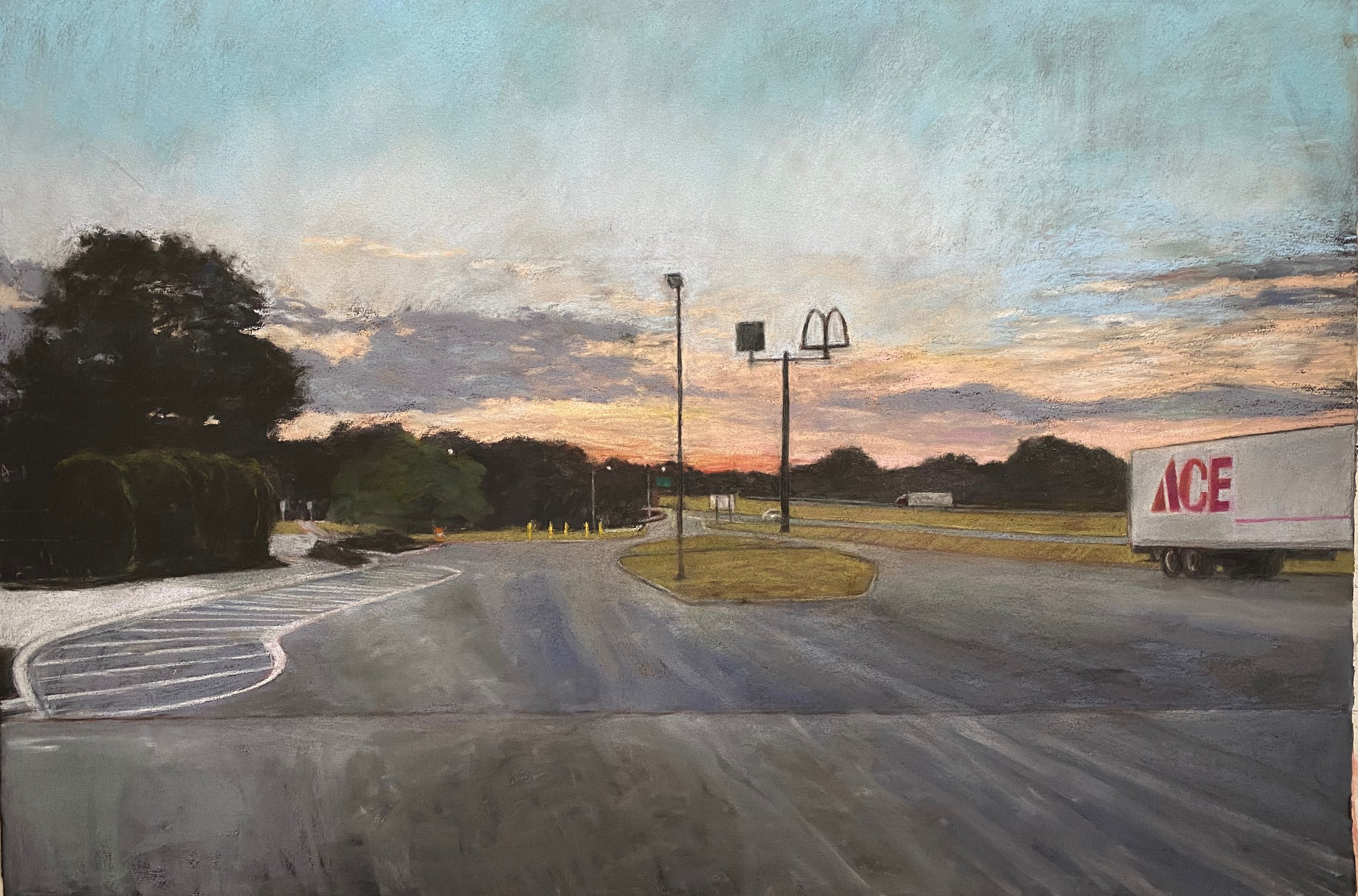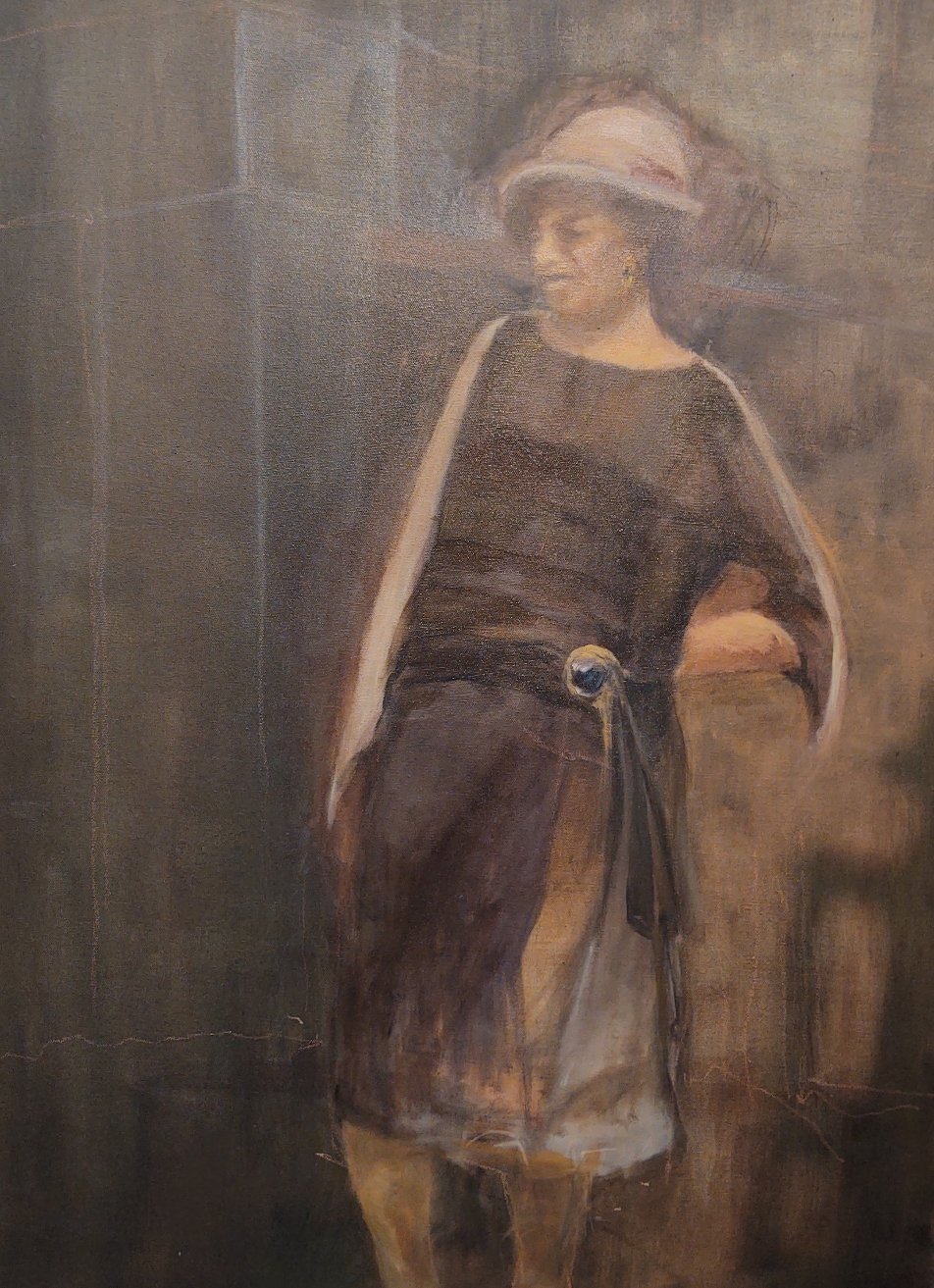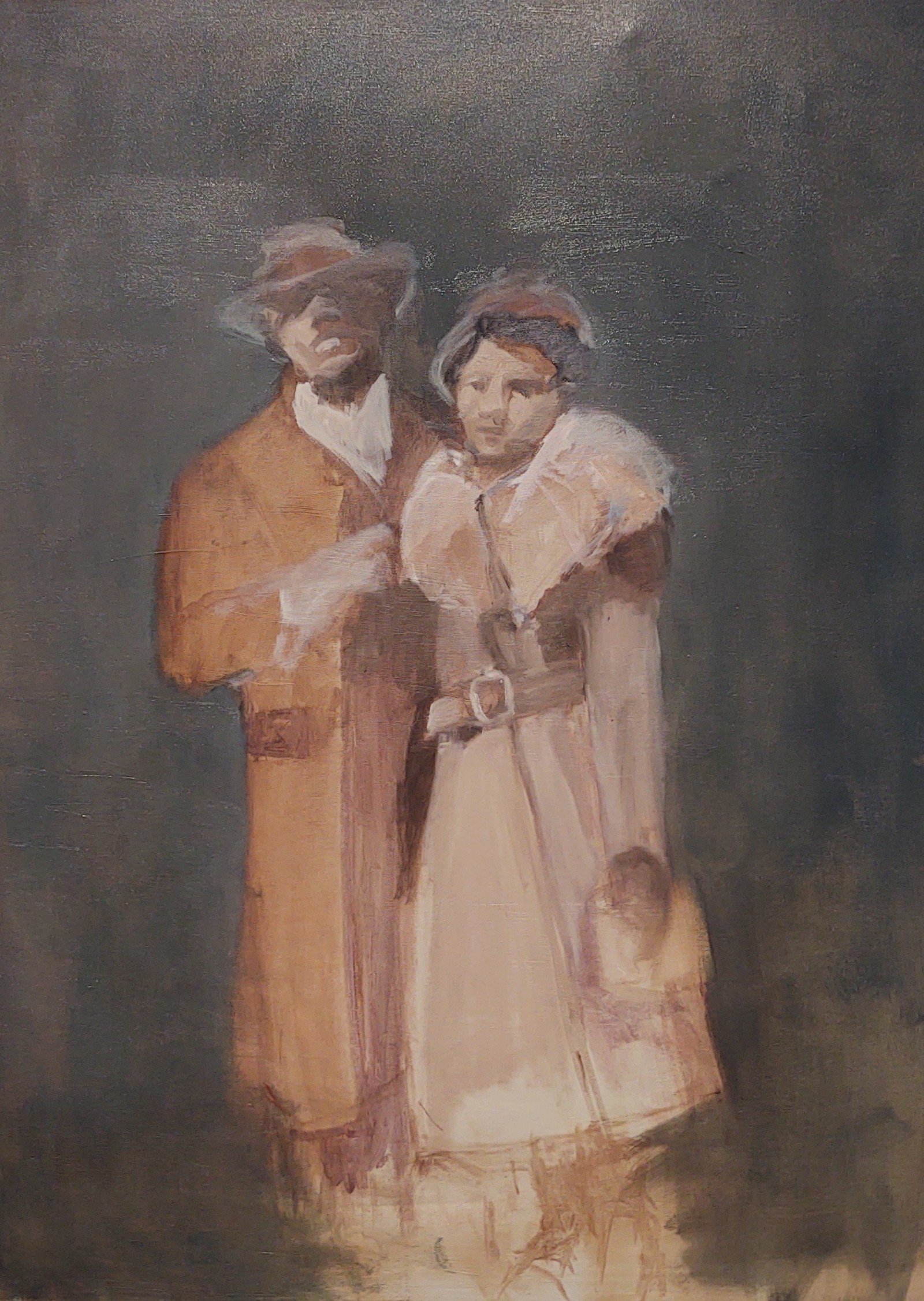DIANE NEWTON
I can’t remember a time when I didn’t draw…making marks on paper with crayons, pencils, charcoal, pastels. I can remember the time when I first had a camera in my hands—at age ten, a Girl Scout Brownie camera and then in art school, a 35mm Mamiya Sekor SLR. Together, my love of drawing and photography have brought about the work in this show.
It happens like this—a landscape, whether rural or urban—catches my eye and the viewfinder of my camera enables me to compose shapes, light and shadow that configure in a moment that is, in most cases, ephemeral. A photograph taken at dusk, for example, would not appear the same the next morning—because, in addition to what exists physically, there is something unseen but felt--a mood, a sensation that can make what is ordinary special—something I can bring to the attention of others.
These pictures—I call them drawings rather than paintings in pastel—are on black Arches paper for a couple of reasons. The large size of the paper is appropriate for my landscapes—it gives the viewer an immediacy with the subject—it shows “how big life is”--a line I heard recently. And the black paper intensifies the color of the dry pastel so the work is identifiably graphic—not photographic. The pastels can flourish and be beautiful on black Arches even if the subject is not.
As of August this year, I will have lived in the Northeast for thirty years. I came from the Midwest where I was an art student—four years at the University of Nebraska where I also earned a teaching certificate. I worked for a commercial photographer for two years and then put my teaching certificate to use in the Omaha Public Schools. In 1977, my family and I moved to Wichita, Kansas, and there I received an MFA in Painting and Drawing from Wichita State University. Since moving east I’ve lived in Ithaca and for a little over a decade in the Boston area where I’ve shown my work in several galleries there.
One more thing—I must emphasize the Midwest has been crucial to my way of seeing. Landscape I’ve heard cynically described as “the middle of nowhere” is, to me, anything but—its terrain goes beyond “the pretty” of traditional landscape. Its expansive shapes, its often monochromatic colors, its light and the components of modern life—signs, utility poles and wires, painted lines on pavement—show us—artist and viewer—representations of modern life.

Night Colors, 34" x 48" (framed), pastel on black Arches paper, 2022

Night Tree, 34" x 48" (framed), pastel on black Arches paper, 2022

North Sunset / Winter, 49" x 36" (framed), pastel on black Arches paper, 2023

Ludlow Stop / Mass Pike, 35" x 49" (framed), pastel on black Arches paper, 2022
TERRY PLATER
A practicing artist focused on figure, portrait, landscape, and narrative painting, Plater was born and raised in Philadelphia PA to an architect and an educator. Widely traveled, she earned graduate degrees in Architecture (M. Arch) and City and Regional Planning (Ph.D., in international development) and enjoyed a 25+ years career in higher education before pursuing an MFA at the New York Academy of Art. Her work centers on questions of equity and aesthetics, continually asking the viewer if and how the two conditions can coexist.
“I am a painter whose work – whether figure, portrait, or landscape – speaks to singular stories as well as shared histories. I am an artist who -- working from observation and first-hand experience whenever possible -- is drawn to subjects that are defined by questions of equity as well as ideas of beauty. My work positions itself to have both explanatory value and emotional power – positions itself to, in the words of the late Bayard Rustin, speak truth to power.
My interests are evident in the paintings presented here – part of a larger project based on an archive of family photographs of people who lived between 1850 and 1950 in Maryland, Virginia, and Washington DC. The subject of these paintings is memory and imagination, whether private or public, and the ability of traditional painting to render both.
Intentionally self-referential, these paintings will communicate different things to different people. For me, however, underpinning the entire project is a sense of equanimity -- that evenness of temperament especially valuable in difficult circumstances, in situations that require reconciliation and offer redemption.
A lifelong painter, my natural curiosity – supported by a fulfilling career in higher education, extensive travel in the US and abroad, and an upbringing in a family which, while solidly middle class, is only three generations removed from slavery – continues to influence the subjects and themes of interest to me.”

Florence E. Greene, 40" x 30", oils on canvas, 2023

Anna L. Greene, 40" x 30", oils on canvas, 2023

Present Perfect, 40" x 30", oils on canvas, 2023

Past Present Future, 40" x 30", oils on canvas, 2023

Hats were always worn on Sundays, 40" x 30", oils on paper, mounted on panel, 2023

Christina Huntt, 40" x 30", oils on canvas, 2023
